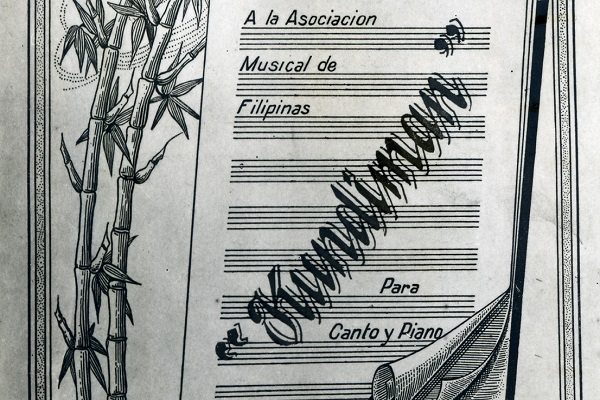
01 Feb More than a Love Song
*Adapted from the essay, “But What Really Is Kundiman?” by Felipe M. De Leon Jr., professor of art studies at the University of the Philippines Diliman, commissioner of the National Commission for Culture and The Arts (NCCA), and chair of Gawad sa Manlilikha ng Bayan (National Living Treasures Awards).
The kundiman, contrary to popular opinion, is not the quintessential Filipino love song.
In fact, the Filipino musical form whose general subject is romantic love is the danza, which was influenced by the Argentine tango and the Cuban habanera. Such popular Filipino love songs as Dahil Sa Iyo , Tangi Kong Pag-ibig , and Hindi Kita Malimot (Josefino Cenizal) are danzas.
In other words, the worldly, languorously sensual kind of romantic love suggested by Latin songs and dances, particularly the tango, is alien to the kundiman.
The authentic kundiman is not merely about love. Instead, it inspires a selfless and spiritual attitude and evokes intense longing, caring, devotion, and oneness not only with a romantic partner, but also with a parent, child, a spiritual figure, the motherland, or an ideal or cause.
Many nationalistic songs can be classified as kundiman. These include Bayan Ko (Constancio de Guzman, 1928), Sariling Bayan (V. Tolentino, c. 1930), and Jocelynang Baliwag, which inspired the revolutionaries in Bulacan during the 1896 revolution.
The danza runs in 2/4 time, while the kundiman runs in triple meter. Still, the kundiman’s melody has the tendency to transcend its metric structure. It ignores downbeats, subtly syncopates the second beat, and typically utilizes a rhythmic pattern of consecutive eighth notes, making the melody float, glide, and flow over the beats. It is as if the music is not bound by earthly gravitational laws. Some good examples are Nicanor Abelardo’s Nasaan Ka Irog, Resurreccion Bunyi’s Huling Awit, and Angel Peña’s “Iyo Kailan Pa Man.”
The kundiman’s development is closely related to the Filipino concept of pakikipagkapwa. This is exemplified by the fact that every time a kundiman is performed, the songwriter, singer, and listener become involved in an essentially dynamic, ever-flowing, creatively transforming, and living process. This makes the kundiman a form of social interaction, and not a finished product for passive, easy consumption.
The kundiman also show gestures that reflect actual feelings and emotions rather than empty histrionics and purely theatrical movements. It has a sustained, flowing melodic line and a highly flexible tempo, sensitive to the nuances of feeling and thought. It reveals the creative living presence of a soul, and inspires genuine connection between the performer and the listeners—in the process attaining the sublime Filipino ideal of shared being or pakikipagkapwa. To keep this communal creative process alive in the kundiman is to strengthen and ennoble the Filipino.



Sorry, the comment form is closed at this time.